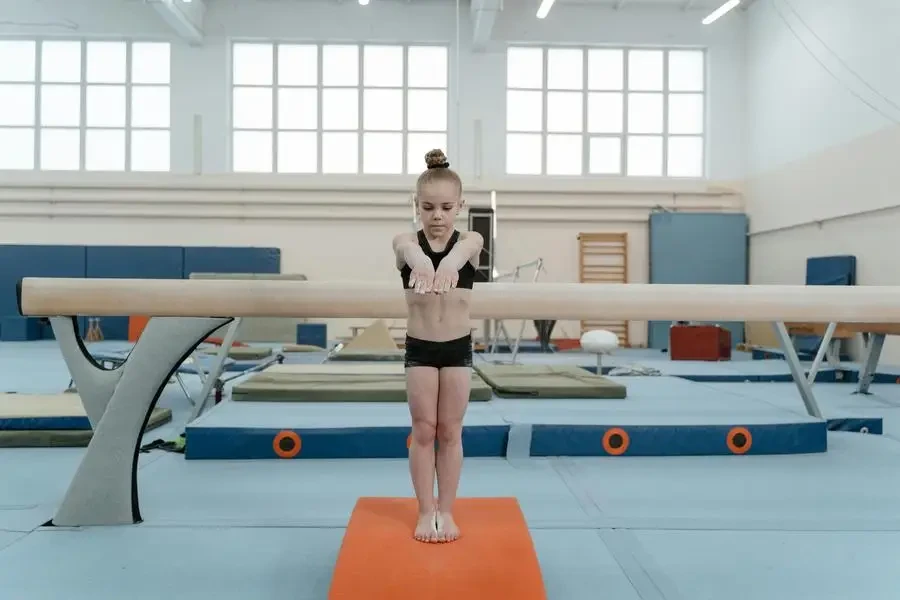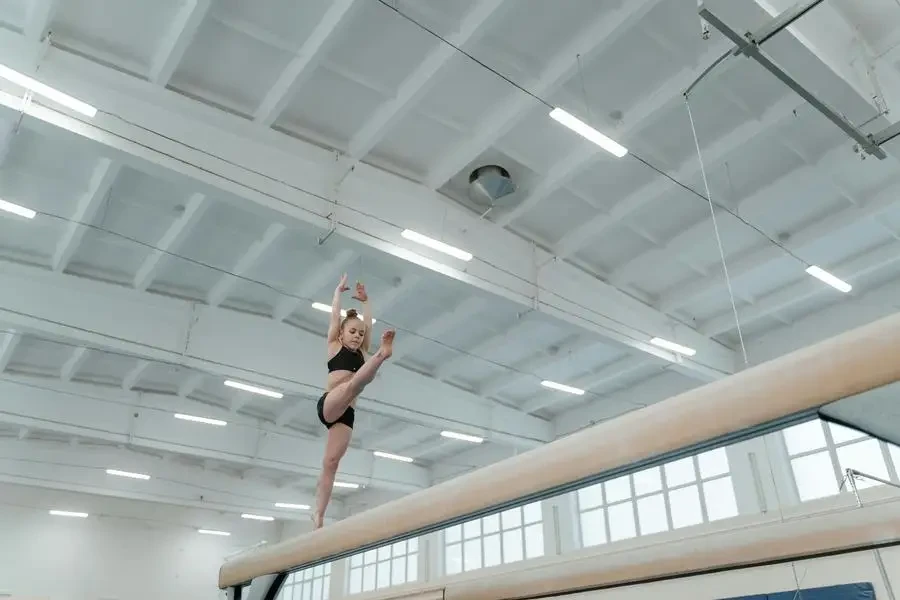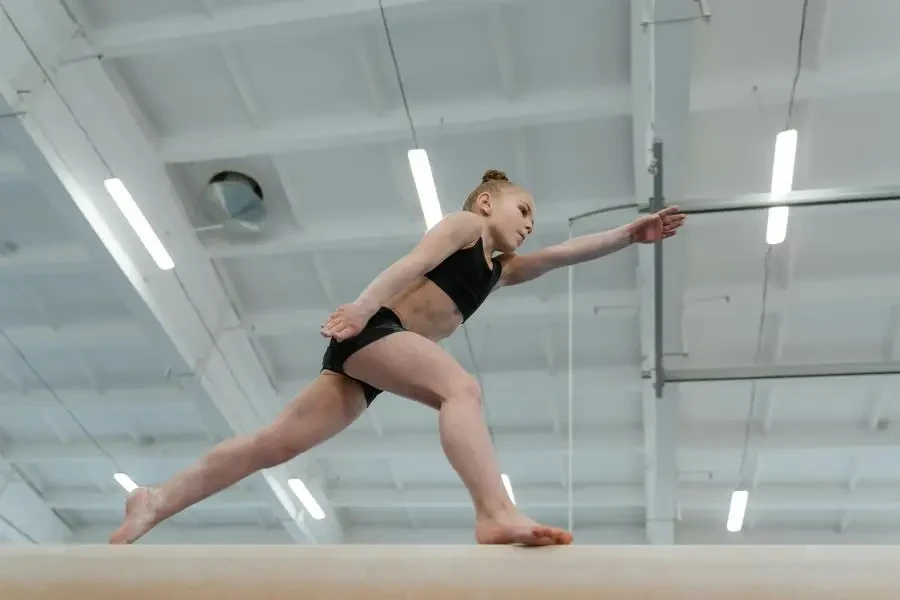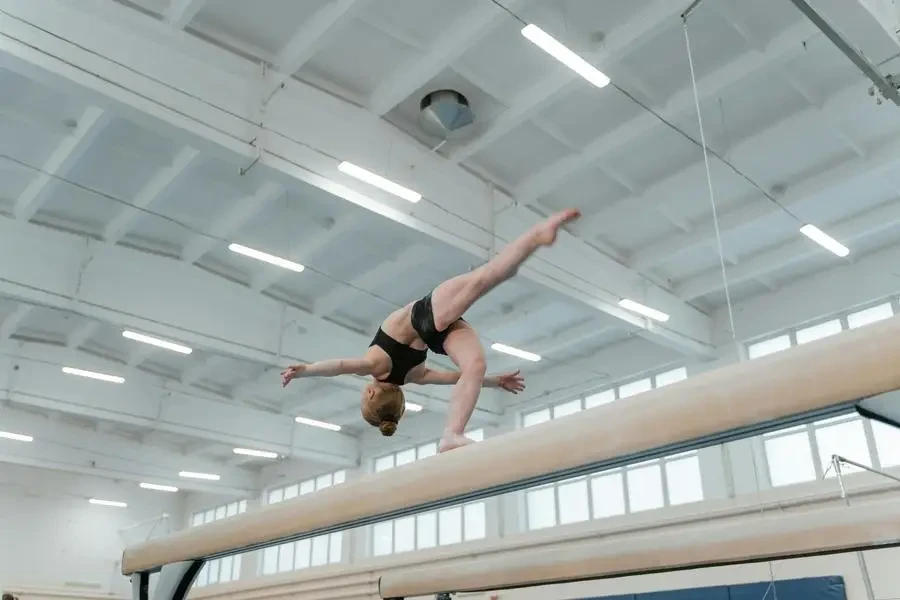The balance beam, a staple in gymnastics, has seen significant evolution in design, materials, and market dynamics. This article delves into the current trends shaping the balance beam market, highlighting the growing popularity of gymnastics, influential market players, and regional preferences.
Table of Contents:
Market Overview
Innovative Materials and Design
Safety and Durability
Customization and Technological Features
Market Overview

Growing Popularity of Gymnastics
Gymnastics has seen a surge in popularity globally, driven by increased media coverage of international competitions and the success of gymnasts in the Olympics. According to the International Gymnastics Federation (FIG), the number of registered gymnasts has grown by 15% annually over the past five years. This growth has fueled demand for high-quality gymnastics equipment, including balance beams.
The balance beam market is expected to grow from $13.14 billion in 2023 to $14 billion in 2024, at a compound annual growth rate (CAGR) of 6.6%, as reported by Research and Markets. This growth is attributed to the expanding interest in gymnastics as both a competitive sport and a recreational activity. The increasing number of gymnastics clubs and training centers worldwide has also contributed to the rising demand for balance beams.
Key Market Players and Their Influence
Several key players dominate the balance beam market, each contributing to the industry’s growth through innovation and strategic partnerships. Companies like American Athletic, Inc. (AAI), Spieth Gymnastics, and Janssen-Fritsen are at the forefront, continuously enhancing their product offerings to meet the evolving needs of gymnasts.
American Athletic, Inc. (AAI) has been a significant player, known for its high-quality and durable balance beams used in major competitions, including the Olympics. Spieth Gymnastics, another leading brand, has focused on integrating advanced materials and ergonomic designs to improve performance and safety. Janssen-Fritsen has made strides in customization, offering balance beams tailored to different skill levels and preferences.
In June 2022, American Axle & Manufacturing Holdings Inc. acquired Tekfor Group for $96.4 million, enhancing its product offerings and diversifying its client base. This acquisition aligns with the company’s strategy to expand its market presence and better serve international clients.
Regional Market Trends and Preferences
The balance beam market exhibits distinct regional trends, influenced by cultural preferences, economic conditions, and the popularity of gymnastics in different areas. North America, particularly the United States, has the largest market share, driven by a strong gymnastics culture and significant investments in sports infrastructure.
Asia-Pacific is expected to be the fastest-growing region in the forecast period, with countries like China and Japan leading the charge. The region’s growth is fueled by increasing participation in gymnastics, government initiatives to promote sports, and rising disposable incomes. According to the International Gymnastics Federation, China has seen a 20% increase in the number of registered gymnasts over the past three years.
In Europe, countries like Russia and Germany have a long-standing tradition in gymnastics, contributing to steady demand for balance beams. The European market is characterized by a preference for high-quality, durable equipment, with a focus on safety and performance.
Innovative Materials and Design

High-Quality Materials for Enhanced Performance
The evolution of balance beams in the sports and accessory industry has been significantly influenced by the introduction of innovative materials. High-quality materials are now being used to enhance the performance and durability of balance beams, making them more reliable and efficient for athletes. Materials such as Spectra, Vectran, and nylon are being utilized in climbing harnesses to provide strength and durability. Similarly, these materials are being incorporated into balance beams to ensure they can withstand the rigorous demands of gymnastics.
Spectra, known for its high tensile strength, is particularly beneficial for balance beams as it provides a robust and durable surface that can endure repeated use without compromising on performance. Vectran, another high-strength material, offers excellent resistance to abrasion and impact, making it ideal for the top surface of balance beams where gymnasts perform their routines. Nylon, with its flexibility and resilience, is used in the construction of the beam’s core, providing a balance of strength and flexibility that is crucial for maintaining stability and performance.
Ergonomic and Aesthetic Design Trends
In addition to high-quality materials, the design of balance beams has also seen significant advancements. Ergonomic and aesthetic design trends are now being incorporated to enhance the user experience and visual appeal of balance beams. The integration of smart design and high-quality components has become a key trend in the sports equipment industry. This trend is also evident in the design of balance beams, where manufacturers are focusing on creating products that are not only functional but also visually appealing.
Ergonomic design features, such as contoured surfaces and adjustable heights, are being introduced to ensure that balance beams can accommodate gymnasts of different skill levels and body types. These features help to reduce the risk of injury and improve the overall comfort and performance of the athletes. Aesthetic design trends, such as the use of vibrant colors and sleek finishes, are also being incorporated to make balance beams more attractive and engaging for users.
Safety and Durability

Advanced Safety Features for Injury Prevention
Safety is a paramount concern in the design and construction of balance beams. Advanced safety features are being integrated to prevent injuries and ensure the well-being of athletes. The importance of safety features in sports equipment cannot be overstated. This principle is equally applicable to balance beams, where features such as non-slip surfaces, padded edges, and shock-absorbing materials are being used to enhance safety.
Non-slip surfaces provide gymnasts with a secure grip, reducing the risk of slips and falls during routines. Padded edges help to cushion any accidental impacts, minimizing the risk of injury. Shock-absorbing materials, such as foam and rubber, are used in the construction of the beam’s core to absorb the impact of landings and reduce the strain on the gymnast’s joints and muscles.
Durability Standards and Quality Assurance
Durability is another critical factor in the design of balance beams. High durability standards and rigorous quality assurance processes are essential to ensure that balance beams can withstand the demands of regular use and provide long-lasting performance.The use of high-strength materials and advanced manufacturing techniques is crucial for achieving durability in sports equipment.
Manufacturers are now employing advanced manufacturing techniques, such as precision machining and automated quality control, to ensure that balance beams meet the highest standards of durability and performance. These techniques help to eliminate defects and inconsistencies, ensuring that each balance beam is of the highest quality. Additionally, rigorous testing and quality assurance processes are conducted to verify the strength, stability, and performance of the balance beams, providing athletes with the confidence that their equipment will perform reliably under pressure.
Customization and Technological Features

Personalized Balance Beams for Different Skill Levels
Customization is becoming an increasingly important trend in the sports and accessory industry. Personalized balance beams are being designed to cater to the specific needs and skill levels of different athletes.
Manufacturers are now offering balance beams with adjustable heights, widths, and surface textures to accommodate gymnasts of different ages, sizes, and skill levels. This customization allows athletes to train and perform on equipment that is tailored to their specific needs, helping to improve their performance and reduce the risk of injury. Additionally, personalized balance beams can be customized with different colors, logos, and designs, allowing athletes to express their individuality and create a unique training environment.
Integration of Technology for Performance Tracking
The integration of technology into balance beams is another exciting trend that is transforming the sports and accessory industry. Technological features, such as sensors and performance tracking systems, are being incorporated into balance beams to provide athletes with real-time feedback and data on their performance.
Sensors embedded in the balance beam can track various performance metrics, such as balance, stability, and movement patterns. This data can be analyzed to provide athletes with insights into their performance, helping them to identify areas for improvement and optimize their training routines. Additionally, performance tracking systems can be integrated with mobile apps and online platforms, allowing athletes to monitor their progress and share their achievements with coaches and peers.
Conclusion
The balance beam industry is experiencing a dynamic transformation driven by innovative materials, ergonomic design, advanced safety features, and the integration of technology. These advancements are enhancing the performance, safety, and customization of balance beams, providing athletes with the tools they need to excel in their sport. As technology continues to evolve, we can expect to see even more exciting developments in the design and functionality of balance beams, further pushing the boundaries of what athletes can achieve.




